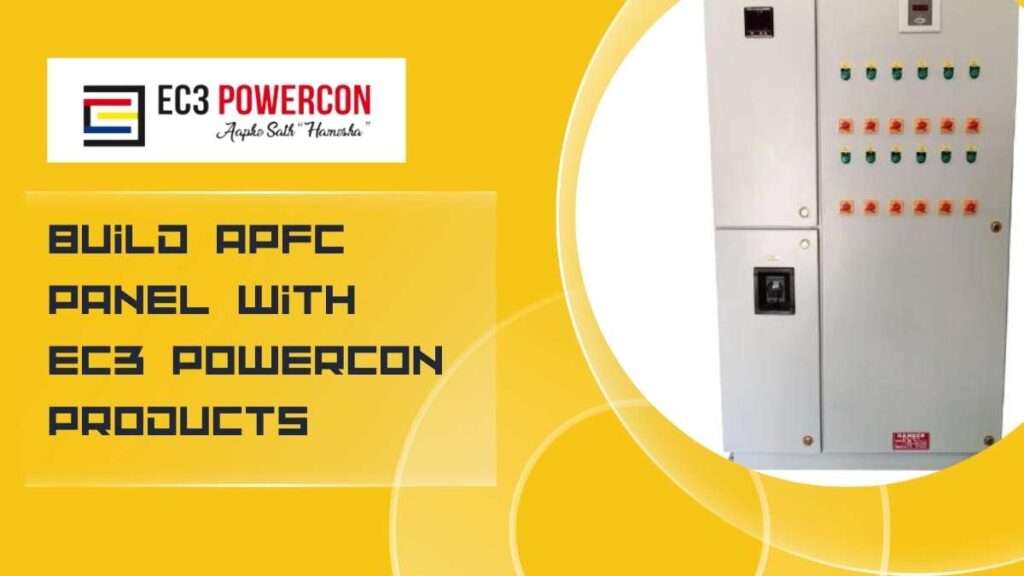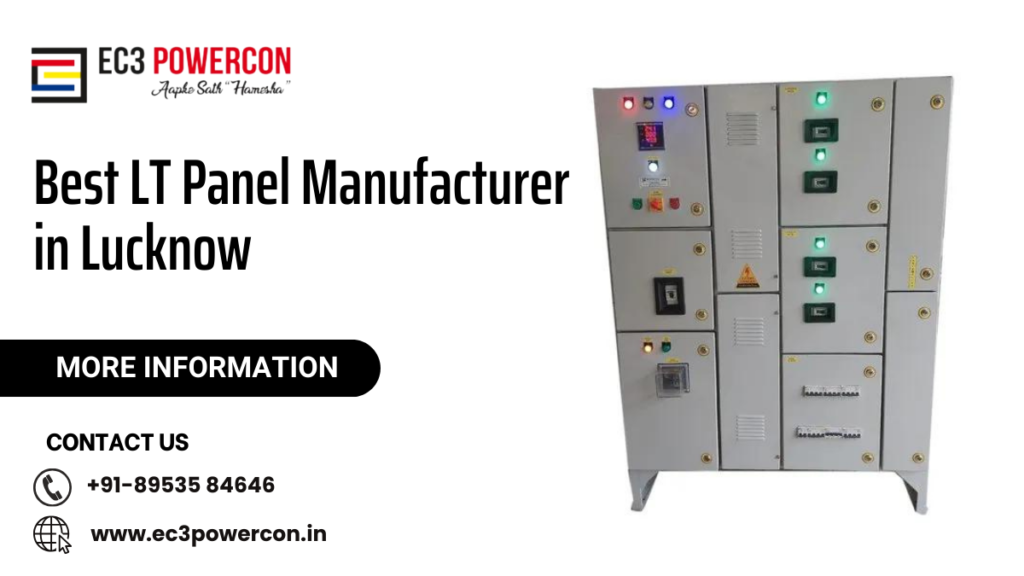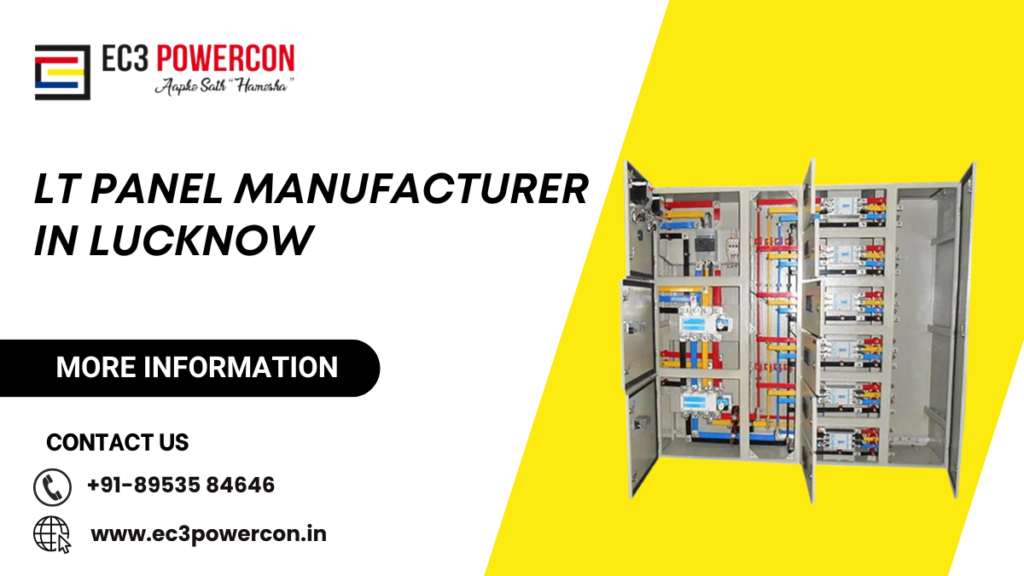Power factor, a crucial aspect of electrical systems, represents the ratio between the actual power (KW) and the apparent power (KVA) drawn by a load. In essence, it gauges how efficiently an electrical equipment utilizes current. For instance, a power factor of 0.85 signifies that a load incurs higher losses in the supply system, resulting in increased consumer bills.
Improving power factor can yield substantial reductions in losses because losses are directly proportional to the square of the current. Therefore, even minor enhancements in power factor translate into significant efficiency gains. EC3 Powercon recognizes the importance of power factor in optimizing electrical systems, offering solutions to enhance efficiency, minimize losses, and ultimately, reduce operational costs for consumers.
Table of Contents
APFC panels are built to correct the power factor and major components needed to build power factors are:
- LT Capacitors
- Capacitor duty Contactors or Power Contactors
- MCB
- Wires
- APFC Relay
- Enclosure
LT Capacitors:
LT (Low Tension) capacitors are electrical devices used to improve the power factor of electrical systems by supplying reactive power. They are typically connected in parallel to the load and draw lagging current to compensate for the lagging current drawn by inductive loads. By enhancing power factor, LT capacitors help in reducing energy losses, improving voltage regulation, and optimizing the efficiency of electrical systems.
Capacitor Duty Contactors or Power Contactors:
Capacitor duty contactors, also known as power contactors, are specialized electrical switches designed to handle the switching and control of capacitors in power factor correction systems. These contactors are specifically engineered to withstand the inrush current associated with capacitor bank switching and ensure reliable operation over extended periods. They play a crucial role in activating or deactivating capacitor banks based on system requirements, contributing to efficient power factor correction and energy management.
MCB (Miniature Circuit Breaker):
MCBs are protective devices used in electrical circuits to safeguard against overcurrents and short circuits. They automatically interrupt the flow of electricity when an abnormal condition occurs, such as an overload or a fault, thereby preventing damage to electrical equipment and minimizing the risk of fire. MCBs are compact and widely used in residential, commercial, and industrial applications for reliable circuit protection.
Wires:
Wires, also known as conductors, are essential components used to carry electrical current within electrical installations. They are typically made of copper or aluminum and come in various sizes (gauges) depending on the current-carrying capacity required. Wires are used to connect electrical devices, such as switches, outlets, and appliances, to power sources, distribution panels, and other components in electrical systems. Proper selection and installation of wires are critical to ensuring safe and efficient electrical connections.
APFC Relay (Automatic Power Factor Correction Relay):
APFC relays are control devices used in power factor correction systems to automatically regulate and maintain the desired power factor of electrical systems. These relays monitor the power factor of the system in real-time and activate or deactivate capacitor banks as necessary to achieve the target power factor. By continuously adjusting the reactive power compensation, APFC relays help optimize power factor, improve energy efficiency, and reduce electricity costs.
Enclosure:
Enclosures are protective housings used to contain and safeguard electrical components, equipment, and systems. They are designed to provide physical protection against environmental factors such as moisture, dust, debris, and accidental contact, as well as to prevent unauthorized access and tampering. Enclosures come in various sizes, materials, and configurations to accommodate different applications and environments, ensuring the safety, reliability, and longevity of electrical installations.
Each component is meticulously engineered to withstand heavy-duty operations and ensure safe performance, particularly in handling the demanding requirements of capacitors’ heavy inrush currents and timely switching for achieving the desired power factor correction.
EC3 Powercon’s LT Capacitors boast robust construction and utilize thick polypropylene films to mitigate the risk of bursting. Available in a range from 1KVAR to 50KVAR, these capacitors are designed to deliver reliable performance and ensure efficient power factor correction.
The Power Contactors from EC3 Powercon are renowned for their ruggedness and reliability, making them the preferred choice in India’s toughest industrial applications such as steel plants, power plants, cement factories, and mining operations. With heavy-duty contact tips, these contactors can sustain the substantial inrush currents associated with capacitor banks.
Manufactured using high-quality materials, EC3 Powercon’s MCBs offer precise tripping capabilities at competitive prices, ensuring effective circuit protection without compromising on reliability.
The APFC Relays provided by EC3 Powercon are designed to deliver seamless switching operations, serving as the central control unit within the panel and facilitating optimal power factor correction.
EC3 Powercon’s wires are crafted from pure copper and feature heavy gauges, making them ideal for motor applications where they can withstand high load currents. Using improper gauge or low-quality PVC wires can pose fire hazards, emphasizing the importance of using reliable wiring solutions.
For enclosures, EC3 Powercon utilizes IEC-certified designs that offer the highest level of rust protection available in the Indian market. These enclosures are widely trusted across various industries for their durability and reliability, ensuring the safety and longevity of electrical installations.
Must Read: Types of electrical control panel?




Pingback: Exploring Low Tension Panels ( LT Panel )